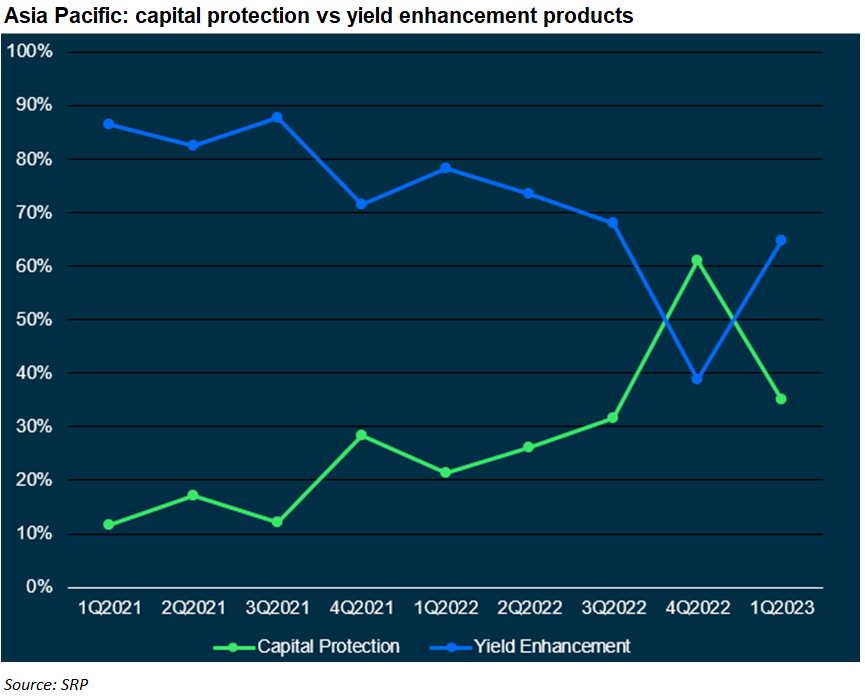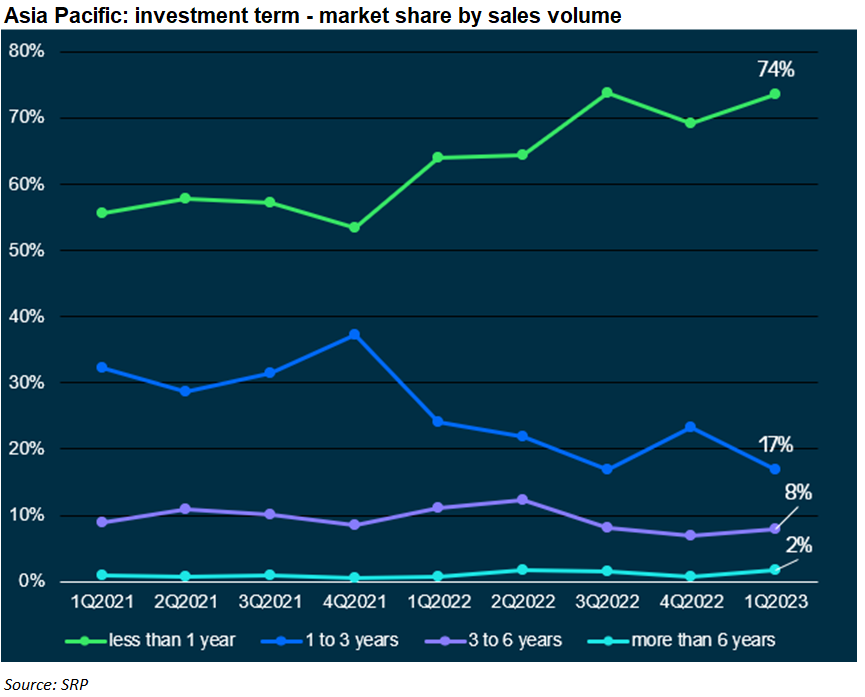Boosted by the rising interest rates, banks issued more capital protection products in Asia Pacific (Apac) with tenors that were progressively shorter.
The market share of capital protection products steadily progressed throughout 2022, starting at the beginning of the year when the two-year USD swap rate surged above two percent and volatility spiked across all markets which meant tenors could be shortened.
In Apac, capital protection products outsold yield enhancement products for the first time in the fourth quarter of 2022, driven by the high number of retirement options on offer to investors in South Korea.
Year-on-year (YoY), capital protection products increased their market share increased by 30 percentage points in the region: from 30% in Q4 2021 to 60% in Q4 2022, while when compared to Q1 2021 the increase is even higher (+60 percentage points).
Market share of yield enhancement products, on the other hand, went the opposite direction, closing 2022 at 40%, down from 70% in Q4 2021.
However, since then the tables have reversed, with yield enhancement product claiming 65% market share at the end of Q1 2023 compared to 35% for capital protection products.
Helped by the rising interest rate environment, banks manufactured more principal-protected products with tenors that progressively shortened.
Products with a tenor of less than one year increased their market share to 74% in Q1 2023 – an increase of four percent from the previous quarter and up 20% YoY.
These short-term capital protection products are often linked to interest rates, which are popular with investors in South Korea, while in Hong Kong SAR and China there is great demand for products on FX rates such as AUD/USD, GBP/USD, USD/CAD, and AUD/HKD.
The market share for products with an investment term of between one and three years fell to 17% in Q1 2023, down six percentage points YoY.
Investors interest for products with a maturity between three and six years, and those with a term of more than six years, remained relatively stable, at eight percent and two percent respectively.


